 |

 |
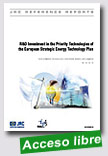 |
R&D Investment in the priority technologies of the European Strategic Energy Technology Plan
European Commission Joint Research Center, October 2009, 84 p.
The report constitutes a benchmark of current expenditures on industrial and public R&D in low-carbon energy technologies that have been identified as a priority for the EU in the Strategic Energy Technology (SET) Plan.
|
Extraído de:
http://ec.europa.eu/dgs/jrc/downloads/jrc_reference_report_2009_10_
investment_set_plan.pdf
|
 |
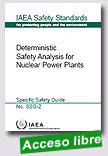 |
Deterministic Safety Analysis for Nuclear Power Plants
IAEA Safety Standards Series, 2009, 84 p.
The objective of this Safety Guide is to provide recommendations and guidance on deterministic safety analysis for designers, operators, regulators and technical support organizations. It also provides recommendations on the use of deterministic safety analysis in: (a) Demonstrating or assessing compliance with regulatory requirements; (b) Identifying possible enhancements of safety and reliability; (c) Obtaining increased operational flexibility within safety limits for nuclear power plants.
|
The recommendations are based on current good practices at nuclear power plants around the world and derive mainly from experience in performing transient analyses and accident analyses for nuclear power plants.
Extraído de:
http://www-pub.iaea.org/MTCD/publications/PDF/Pub1428_web.pdf |
 |
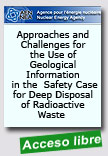 |
Approaches and Challenges for the Use of Geological Information in the Safety Case for Deep Disposal of Radioactive Waste
Nuclear Energy Agency (NEA), 09 October 09, 76 p.
A cornerstone of national decision making and societal acceptance of deep geological disposal of radioactive waste is confidence that such repositories can protect humans and the environment both now and in the future. The “safety case” is the synthesis of evidence, analyses and arguments that quantify and substantiate a claim that the repository will be safe after closure and beyond the time when active control of the facility is
|
ensured. For deep geological disposal, studies of the geosphere form a principal component of the safety case. Geoscientific information is unique in that it can offer evidence and lines of reasoning that span geological timescales (millennia and even longer).
The NEA Approaches and Methods for Integrating Geological Information in the Safety Case (AMIGO) project addresses the collection and integration of geoscientific evidence, analyses and arguments that contribute to an understanding of long-term safety. The third and final AMIGO workshop on “Approaches and Challenges for the Use of Geological Information in the Safety Case” underscored that geoscientific information plays a fundamental role in safety assessments. It is also increasingly used in the wider context of the safety case to provide evidence and arguments for the intrinsically favourable properties of a site, including its long-term stability. No single geoscientific argument “proves” safety, but rather each supports some key element of the safety case and provides enhanced confidence in the safety case. The workshop also considered the links and feedback among the safety case; design, engineering and construction issues; and geoscientific investigations.
Extraído de:
http://www.nea.fr/html/pub/ret.cgi?id=new#6417
|
 |
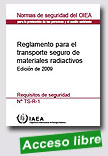 |
|
|
Extraído de:
http://www-pub.iaea.org/MTCD/publications/PDF/Pub1384s_web.pdf
|
 |
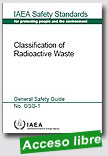 |
Classification of Radioactive Waste - General Safety Guide
IAEA Safety Standards Series, 2009, 68 p.
The objective of this Safety Guide is to set out a general scheme for classifying radioactive waste that is based primarily on considerations of long term safety, and thus, by implication, disposal of the waste. This Safety Guide, together with other IAEA safety standards on radioactive waste, will assist in the development and implementation of appropriate waste management strategies and will facilitate communication and information exchange within and among States. Disposal is considered the final step in the management of radioactive
|
waste, as stipulated in Safety Requirements publications on predisposal management of radioactive waste and disposal of radioactive waste [1, 5].
The Safety Guide identifies the conceptual boundaries between different classes of waste and provides guidance on their definition on the basis of long term safety considerations. While the usefulness is recognized of classification schemes for the safe operational management of radioactive waste, including the transport of waste, such schemes are subject to different considerations and are not addressed in this Safety Guide. Extraído de:
http://www-pub.iaea.org/MTCD/publications/PDF/Pub1419_web.pdf |
 |
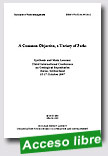 |
A Common Objective, a Variety of Paths. Synthesis and Main Lessons: Third International Conference on Geological Repositories
Nuclear Energy Agency (NEA), 20 October 09, 40 p.
High-level political, governmental and regulatory decision makers, as well as representatives of economic and social groups and implementing organisations met in Berne, Switzerland to present and to reflect on their collective experience towards meeting the challenge of implementing national disposal projects for placing radioactive waste in deep geological formations. This summary highlights the main
|
lessons to be learnt and final recommendations to assist future developments in national radioactive waste management programmes seeking to meet both technical and social imperatives of modern society.
Extraído de:
http://www.nea.fr/html/pub/ret.cgi?id=new#6875
|
 |
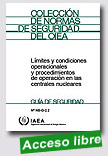
|
Límites y condiciones operacionales y procedimientos de operación en las centrales nucleares
Colección de normas de seguridad del OIEA, 2009, 47 p.
This Safety Guide provides guidance on the development, content and use of operational limits and conditions (limits on plant operating parameters) and operating procedures that affect them. It recommends how to meet the requirements established in Safety Standards Series No. NS-R-2, Safety of Nuclear Power Plants: Operation, setting out the responsibilities of the operating organization in setting, modifying and documenting operational limits and conditions and ensuring compliance with them.
|
Contents: 1. Introduction; 2. Safety objective; 3. The concept of operational limits and conditions and their development; 4. Safety limits; 5. Limiting safety system settings; 6. Limits and conditions for normal operation; 7. Surveillance requirements; 8. Operating procedures; 9. Development of operating procedures; 10. Compliance with operational limits and conditions and operating procedures; Appendix I: Selection of limits and conditions for normal operation; Appendix II: Development of operating procedures (outlines); Annex: Example to explain some terms used; Glossary.
Extraído de:
http://www-pub.iaea.org/MTCD/publications/PDF/Pub1100s_web.pdf
|
 |
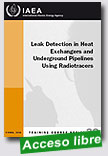 |
Leak Detection in Heat Exchangers and Underground Pipelines Using Radiotracers
IAEA Training Course Series, 2009, 77 p.
The International Atomic Energy Agency plays a major role in facilitating the transfer of radiotracer technology to developing Member States. The use of radiotracer techniques is well established in many Member States; some hundred radiotracer and end user specialists have been trained in radiotracer techniques and their applications; nearly 50 radiotracer laboratories have been working in this field. The training of radiotracer practitioners is vital for the provision of quality services to industry.
|
Leak detection using radiotracer techniques is probably one of the most widespread applications of radiotracers in industrial troubleshooting. Radiotracer techniques are the most competitive for online leak inspection of heat exchangers and buried pipelines. Radiotracers help in early detection of leaks in heat exchangers and underground transporting pipelines, thus saving money, reducing shutdown time, ensuring safe operation and protecting the environment from pollution.
The training course series on leak detection in heat exchangers and underground pipelines using radiotracers addresses the needs of the radiotracer groups and their end users. Besides training purposes, this material will assist radiotracer groups in establishing their quality control and accreditation systems.
Extraído de:
http://www-pub.iaea.org/MTCD/publications/PDF/TCS-38_web.pdf
|
 |
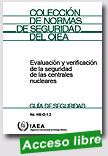 |
Evaluación y Verificación de la Seguridad de las Centrales Nucleares - Guía de Seguridad
Colección de normas de seguridad del OIEA, 2009, 110 p.
This Safety Guide provides recommendations to the designers of nuclear power plants for a comprehensive safety assessment in the initial design process and for modifications to the design, as well as recommendations to operating organizations for independent verification of the safety assessment for new nuclear power plants. The guidance can also be applied to |
safety reviews for existing plants. The methods and recommendations can be used by regulatory bodies for the conduct of the regulatory review and assessment. The Safety Guide recommends how to meet the requirements established in Safety Standards Series No. NS-R
Extraído de:
http://www-pub.iaea.org/MTCD/publications/PubDetails.asp?pubId=6231
|
| |
|
|
|
|
|
|
|
|
| |
|
